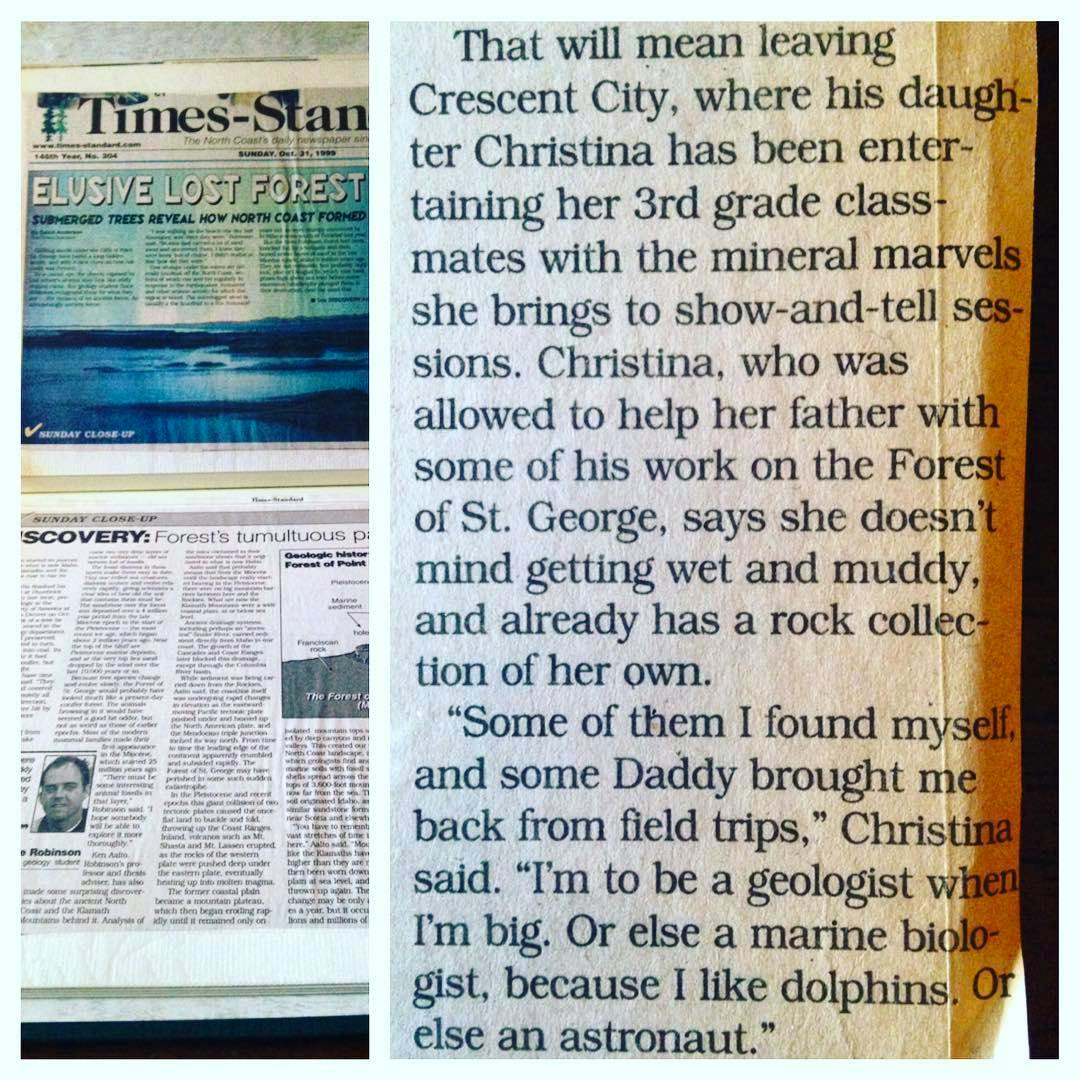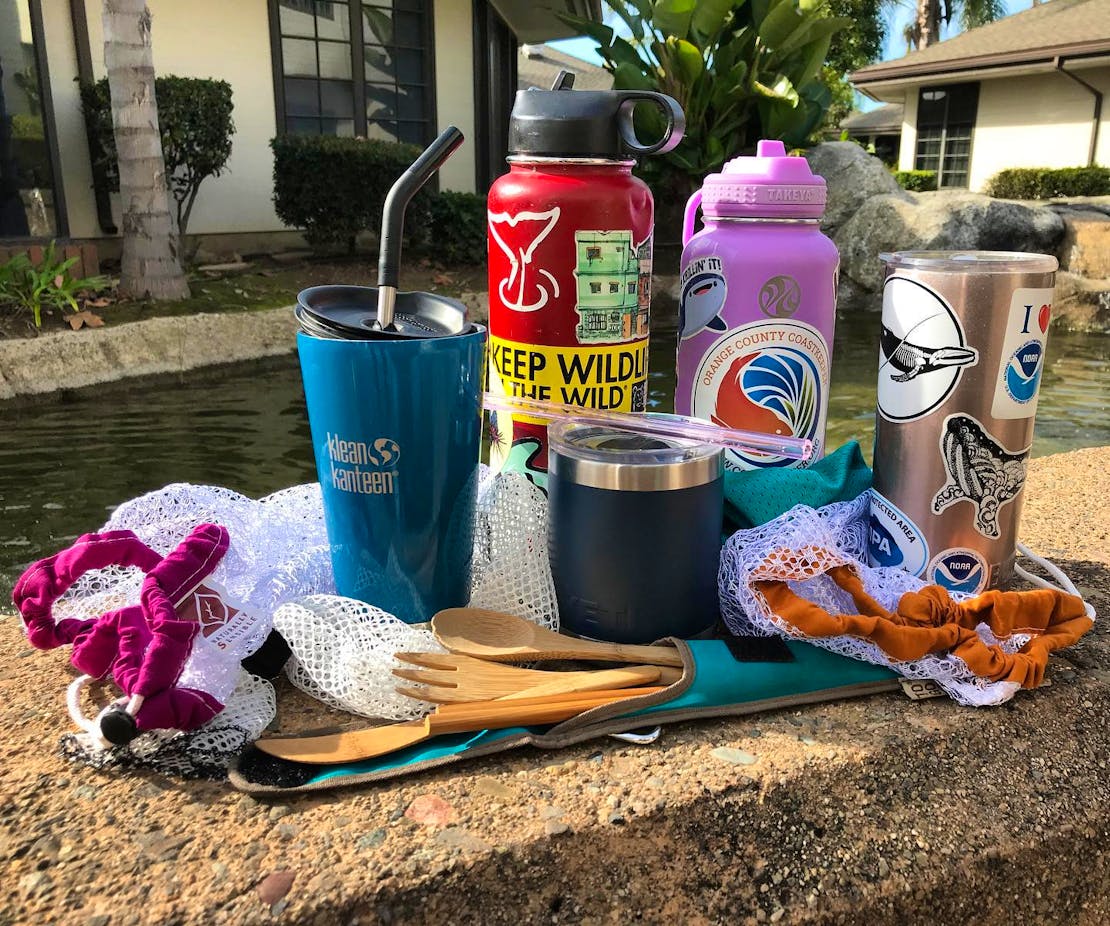I first fell in love with the ocean as a six-year-old girl exploring the tidepools of Crescent City, in Northern California. I helped my father find pieces of a 6 million- to 6.4 million- year old lignitic (partially coalified fossil) forest for his master’s thesis at Humboldt State University. He was a disabled Army veteran, single dad and geology student, so I often accompanied class lectures and field trips. I carefully went tidepooling to look for pieces of this forest in the intertidal zone that was uncovered during the 1997-1998 El Niño event. These experiences ignited my curiosity to learn all I could about the ocean and my desire to one day make it my office.


Learning about whales and dolphins and their behaviors and intelligence captivated and fueled me to pursue my marine biology career goals, regardless of how challenging the road became. After finally graduating with my B.S. in marine biology from California State University of Long Beach, I worked for an environmental consulting company, MBC Aquatic Sciences, where one of my duties included microscopic sorting of various coastal benthic samples. This microscope sorting introduced me to microplastics, tiny sesame seed-sized pieces of plastic and microfibers (these shed from synthetic clothing) mixed with organic material and invertebrates in almost every sample jar. This was my lightbulb moment! It opened my eyes to the ubiquitous impacts of our plastic pollution and how interconnected humans are to our environment, whether we realize it or not. I started sharing plastic pollution information with friends and family and looking into solutions.
To spread awareness of the consequences our plastic use has on human health, wildlife and the environment, I created my own website and included information on plastic alternatives, zero waste options and educational resources. I also created a social media presence to reinforce these efforts and amplify my message and get people involved. I like to share tips on ways we can all incorporate more eco-friendly habits in our everyday lives. Doing this not only benefits our planet by reducing our negative impacts, but it can also inspire others to make lifestyle changes that have a ripple effect on those around us.
This felt like something I HAD to do because it’s something I CAN do. So much of my fieldwork with both OC Coastkeeper and Laguna Ocean Foundation highlighted litter and plastic pollution in my local watersheds. Seeing littered beaches and picking up trash while surfing drove me to want to do something to prevent this litter from turning into marine debris and harming sea life. Years ago, I started grabbing five pieces of plastic while walking back to my car after every surf session, then asked my friends to do the same and I was pleasantly surprised to learn that some of them even do this on days we don’t surf together. This is something I encourage everyone to do anytime they go outside. Realizing I help change others’ behavior and knowing I am making a difference feeds the resilience and motivation that keeps me going. Helping to protect the ocean and its inhabitants has increasingly resonated as my life’s purpose over the years, and that passion continued to drive me when I struggled with my career path. I am really proud of my younger self for trusting my gut instincts to not pursue work with any scientists who made me feel uncomfortable as a young woman and for learning from those experiences instead. I know that I can stand up for myself and my scientific integrity, even to scientists I once admired, if their behavior is inappropriate and unprofessional, and I will not be intimidated by their achievements in the field as I forge ahead on my own path and create my own accomplishments.
One of the accomplishments I’m most proud of is what I created last year with one of my favorite friends (and trash-removing partner in crime) Janine Rodriguez. We designed stickers encouraging people to protect our planet from pollution and started picking up one pound of trash for every $1 sticker sold. We started this year with a goal of removing 1,000 pounds of trash. To chip away, we’ve been doing weekly cleanups and by the end of May 2021 we already collected about 1,100 pounds collected and surpassed our sticker goal as well! The last week of January we had a big rainstorm so I planned to head down for a beach cleanup that weekend. But I was not expecting and have never seen so much trash in one area before. I managed to collect 124 pounds, but there were bulky furniture items, shoes galore, lots of facemasks, tons of single-use food and beverage containers, toys, endless pieces of Styrofoam and lots of broken up plastic. It quite frankly moved me to tears. Thanks to wonderful friends who heard my call for help, we removed almost 400 pounds of trash the following day. I am simultaneously so proud of these efforts, but sad that this much trash was there to begin with, and that so much trash remains.




What is left will undergo photodegradation where sunlight breaks larger plastic debris into microplastics that can end up everywhere. Every water particle in the ocean eventually circumnavigates the planet through our ocean currents and those currents carry trash and plastic across the globe (some float and some sink, depending on the chemicals used during production). We are still learning how high levels of plastic-associated toxins impact wildlife health and how they bioaccumulate and biomagnify throughout food webs. Plastic pollution can cause entanglement, be ingested and act as a vector for diseases and contaminants in the environment. This global issue threatens all our marine animals, and animals on land as well. Plastic is now found in our deepest ocean trenches and ice core samples from our polar regions. From our tiniest animals (zooplankton and krill) to our larger megafauna (marine mammals and turtles), scientists have documented plastic pollution impacts in at least 700 marine species alone. A report from Oceana found that 88% of 1,800 recorded animals (40 species) suffering from plastic entanglement or ingestion are species listed as threatened or endangered under the Endangered Species Act.
I went to the historical breeding lagoons of Baja California Sur in early February last year for a gray whale ecology field trip, and as we were watching a gray whale who was curious about our boat, some derelict fishing gear floated by and we were too far away to grab it. I was surprised to see ghost gear in this special, protected habitat and I held my breath the entire time. These whales were alright as it drifted away, but marine debris knows no bounds and even in an area protected and managed by a federal agency, with no fishing during the breeding season, it proved again that we need to be accountable for our waste.


Throughout the pandemic I have noticed a new type of trash category: PPE litter. After seeing so many face masks wherever I do a cleanup, I am investing in a new clicker to count PPE litter for my data. On top of masks (and please cut your ear straps when disposing to prevent wildlife entanglement) and gloves, I’ve also noticed a soar in plastic food packaging litter from the increase in people ordering take-out, to reusables not being accepted and restaurants using more single-use containers for every condiment. One way I am trying to combat this is by refusing any single-use plastics when ordering my takeout and trying to remember to ask again before accepting my food. I don’t remember every time, but practice makes perfect.
It is easy to get overwhelmed by environmental issues and the challenges tied to solving these global concerns. Last year, Janine had an insightful social media post letting everyone know that it’s okay to not feel okay. So, when I feel glum with environmental fatigue, I remember her post and I turn that frustration and sadness into motivation, put on my favorite emo or pop playlist, gear up with my trash data and cleanup supplies and remove trash for an hour in my neighborhood or at the beach after surfing. This is always gratifying because I know that my actions made a difference.
I recently had a young girl tell me that she looked up to me and wants to become a marine biologist so she can work to protect marine animals and the ocean. A few years ago, I never could have imagined that I could be a role model as I struggled through some classes and had no idea how I would get to my next marine biology stepping stone. Now that I’ve graduated and have been working in the field, I want to encourage others to follow their career goals and passions. I recently became a pen pal for Letter to a Pre-Scientist, whose mission is to facilitate one-on-one connections to humanize STEM professionals, demystify STEM career pathways and inspire all students to explore a future in STEM. Writing letters back and forth learning about my middle school pen pal, sharing interests and having her be proud of my journey has been especially fulfilling.


Though there are so many environmental problems, I do the best I can. While I'm not currently studying whale populations, I feel I am safeguarding them by advocating for plastic pollution prevention like the Plastics Free California ballot initiative, which Defenders of Wildlife also endorsed. I think my motto of “Refuse, Reduce, Reuse, Recycle, Grab 5” is one that enables people to take action starting today and allows them to see their efforts making a positive change. It is an honor to educate and empower future scientists of all backgrounds and passions, to contribute in different ways to help a variety of conservation efforts. Having students share feedback that they enjoy my OC Coastkeeper presentations (even virtually) on all things encompassing plastic pollution and how they can make a positive impact is so rewarding. I am optimistic about the future of the ocean and planet because mother nature is resilient and I know my generation and those to come will continue fighting for our blue planet. This is how we ensure a healthy ocean for future children to explore the tidepools and go whale-watching, letting their curiosity turn into their passion for nature and connecting the dots for continuing conservation efforts.












